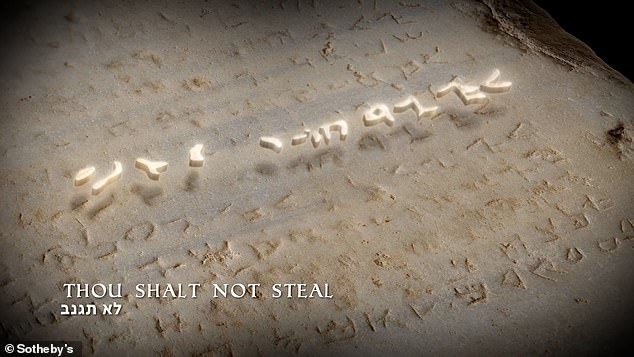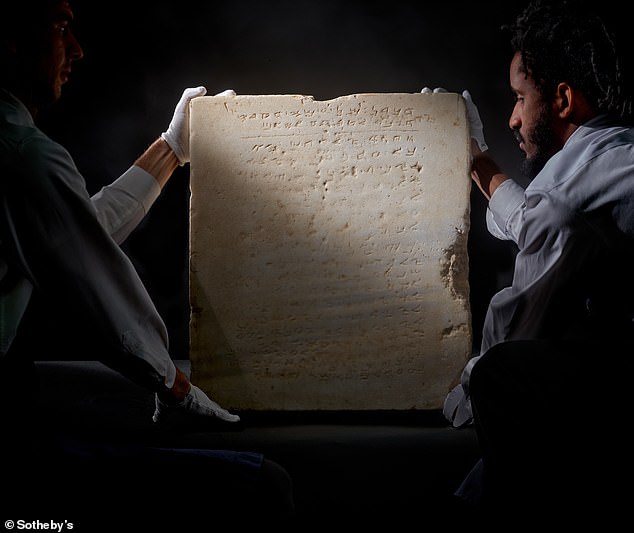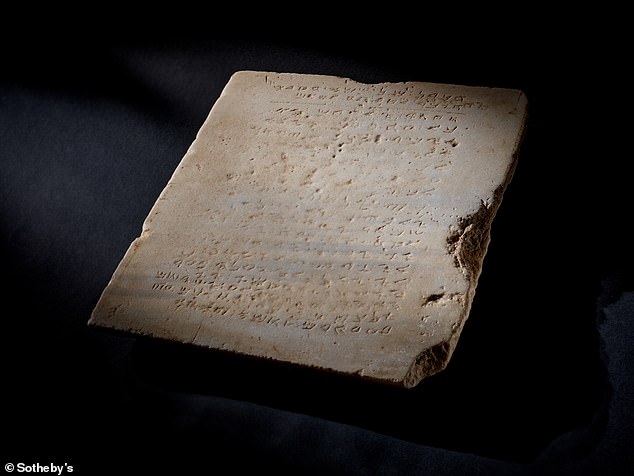A 1,500-year-old stone tablet bearing the oldest known inscription of the Ten Commandments is expected to sell for up to $2 million (£1.57 million) at auction.
The marble slab was found in Israel in 1913, but then spent 30 years being used as a paving stone at the entrance to a house before its meaning was discovered.
The stone, which weighs 115 pounds and measures about two feet tall, was difficult to identify because its inscription is written in Paleo-Hebrew, a language that fell out of use centuries ago.
The twenty lines of text etched into the stone closely follow biblical verses familiar to both Christian and Jewish traditions, except for one key difference.
Only nine of the commandments found in the Old Testament Book of Exodus are present.
The traditional third commandment – “Thou shalt not take the name of the Lord in vain” – is omitted in favor of a directive to worship on Mount Gerizim, a specific sacred site for the Samaritans.
A 1,500-year-old stone tablet bearing the oldest known inscription of the Ten Commandments is expected to sell for up to $2 million (£1.57 million) at auction.
Samaritans split from mainstream Judaism nearly 3,000 years ago, but they observe similar religious practices and hold sacred a very similar version of the Hebrew Bible (what Christians know as the Old Testament).
The tablet will be sold in New York through Sotheby’s auction house next month. It will be on public display for the first time starting December 5.
Sharon Liberman Mintz, Sotheby’s Judaica specialist, said: “This is the oldest known complete tablet of the Ten Commandments, which are, of course, the moral code underpinning Western civilization.”
‘It’s a surprising find. When you see it you can feel the resonance of the communication.’
The original site of the tablet, probably a synagogue, was probably destroyed by the Romans during invasions of the region between 400 and 600 AD or in the Crusades in the 11th century.
The tablet is the only complete one from the late Byzantine period that bears the Ten Commandments.

The eighth commandment, “Thou shalt not steal,” is highlighted above.

The Fifth Commandment, “Honor your father and mother,” is highlighted above

The marble slab was found in Israel in 1913, but then spent 30 years being used as a paving stone at the entrance to a house before its importance was discovered.
It was discovered during railway excavations near the sites of the first synagogues, mosques and churches.
The first two lines of the tablet are dedications and then the commandments are listed.
In 1943, the tablet was purchased by a scholar who discovered its meaning after translating Paleo-Hebrew writing.

The stone, which weighs 115 pounds and measures about two feet tall, was difficult to identify because its inscription is written in Paleo-Hebrew, a language that fell out of use centuries ago.
The academic, known only as Kaplan, kept the treasure until the 1990s, when it was sold.
It was sold again in 2005 and then purchased by its current owner, collector Dr. Mitchell Stuart Kappell, in 2016.
It is expected to sell for at least $1 million (£785,000).
Liberman Mintz added: “Being able to offer this treasure is very exciting.” It is not often that one can buy a tablet of the 10 commandments.’


